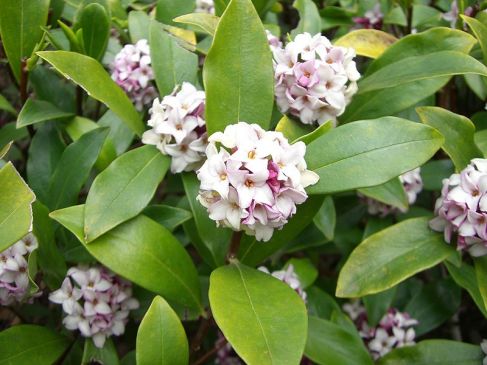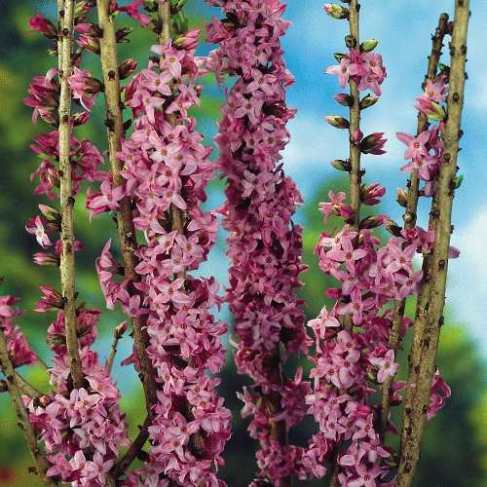
Daphne odora. Miya. Wikimedia Commons.
Lets start off with a little historical fact courtesy of Tovah Martin. Daphne odora
was one of the first plants to come over to the New World from the Old World, from the botanical ventures of the East India Company. In 1770, Benjamin Torin collected three of the most fragrant plants in the world on his one and only collection trip in 50 years of being there; but as Martin put it- he hit jackpot in that one attempt. The three plants were Daphne odora, Osmanthus fragrans, and Murraya exotica; osmanthus is on my list of plants to critique in the next few days, murraya can wait until June.
If you have seen a pattern to the other plants I’ve talked about lately, then it should come as no surprise that Daphne odora is another Asian native- overlapping the same boundaries as Camellias, Osmanthus, and Pittosporum. To think, all these plants grow and bloom in the Asian woods at the same time-no wonder the Chinese love flowers so! What a pampered nose it must be to have a garden with all these early spring bloomers blooming at the same time in the same space! Well then again, I guess in the deep south this is about the only time you can be outside without melting in the heat, so might as well make it count right?
Alright, onto fragrance. Tovah Martin put Daphne in the same group as jasmines, roses, and violets; plants that have no comparison because they are just that unique. I would agree with that to a degree, as Daphnes are so overwhelmingly fragrant that the nose can be lost in an ecstatic euphoria and not even begin to be able to compare it to anything. The scent really is that powerful- and carries quite a way away from a full blooming plant. I saw my first one grouped by the entrance to a building at Filoli Gardens outside San Jose, California, and thought I would never smell anything so wonderful again. So beautifully perfumed, so feminine, its like its own brand of perfume- bottle it up and apply lightly! Well actually don’t because its highly toxic, but you get what I’m going for. Its almost like Vera Wang perfume actually if I really had to compare it to anything. Take Citrus blossoms and Stargazer Lillies, combine and then add a touch of rose and perhaps a light touch of woods and you get a general idea of what Daphnes smell like.
Daphne, like its many southern blooming buddies, is only hardy to Zone 8- but some hardier species are out there that are also very fragrant. The bush is very pretty when not in flower- resembling Laurels or a similar evergreen. However, they are very difficult to cultivate in gardens and in pots, and it would take a professional to care for it. If the soil drainage and nutrition aren’t perfect, well it just dies. Not that I advise anyone to actually plant Daphnes, as they are so toxic that the plant sap can cause allergic reactions and eczema in sensitive individuals. Not fun!

Daphne mezereum. http://www.gardenoasis.co.uk
The genus is native to much of Mediterranean Europe through Asia, and many species make garden plants. The second most widely grown Daphne would be Daphne mezereum,
native to Europe and growing in many European gardens. It happens to be more content to growing in different conditions and is hardier as well, but still quite toxic! Other species grown include Daphne laureola, Daphne pontica, and Daphne x napolitana. All are fragrant, although differently from odora, yet strongly enough in their own way.
Of all the plants in my selection so far, this has to be the least grown that I’ve seen, which is really quite sad on one hand but probably a good idea. Most people just aren’t lucky with them, even if the soil is right. But with a fragrance like that, it would be well worth the pain in my book!
